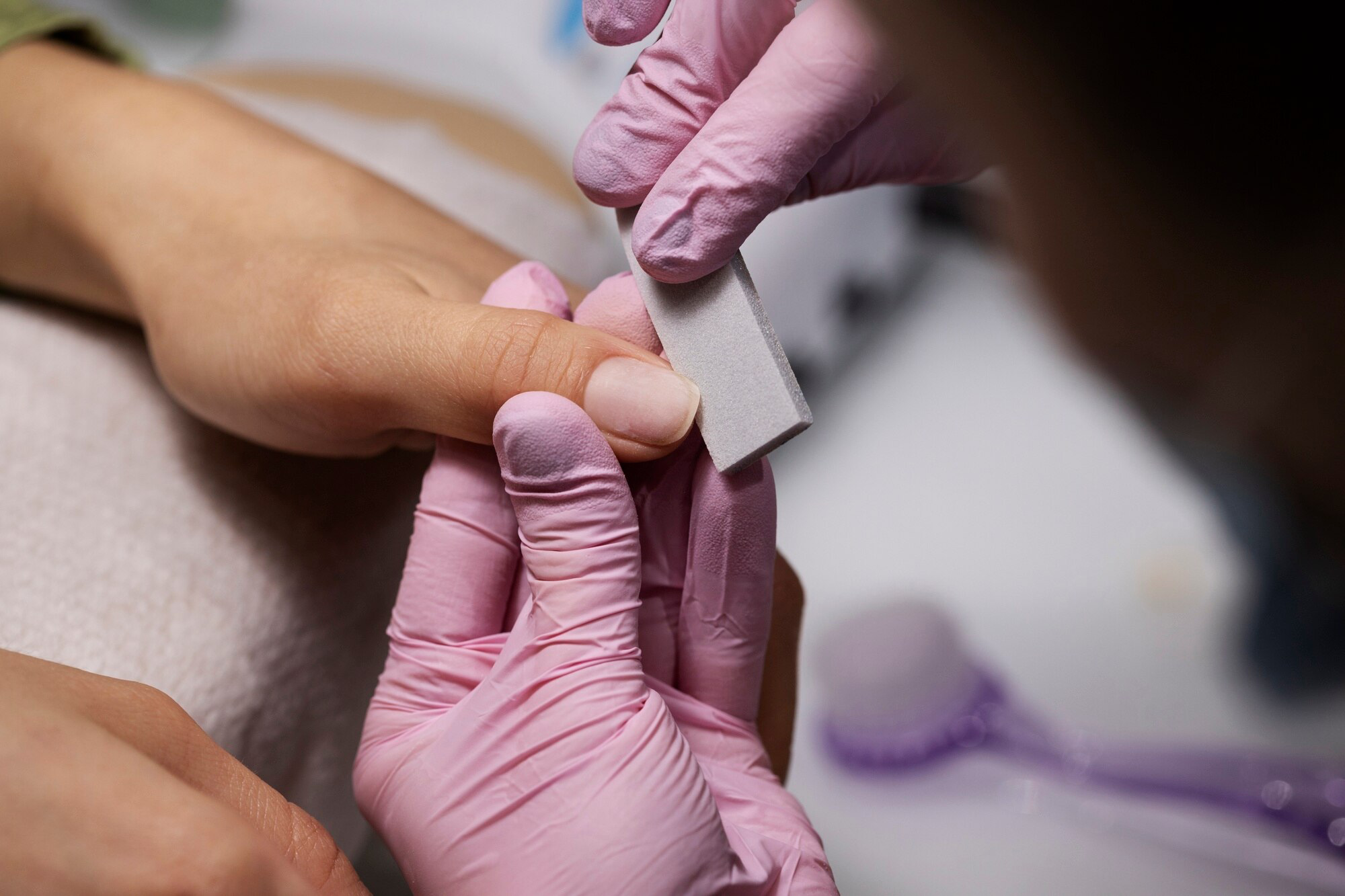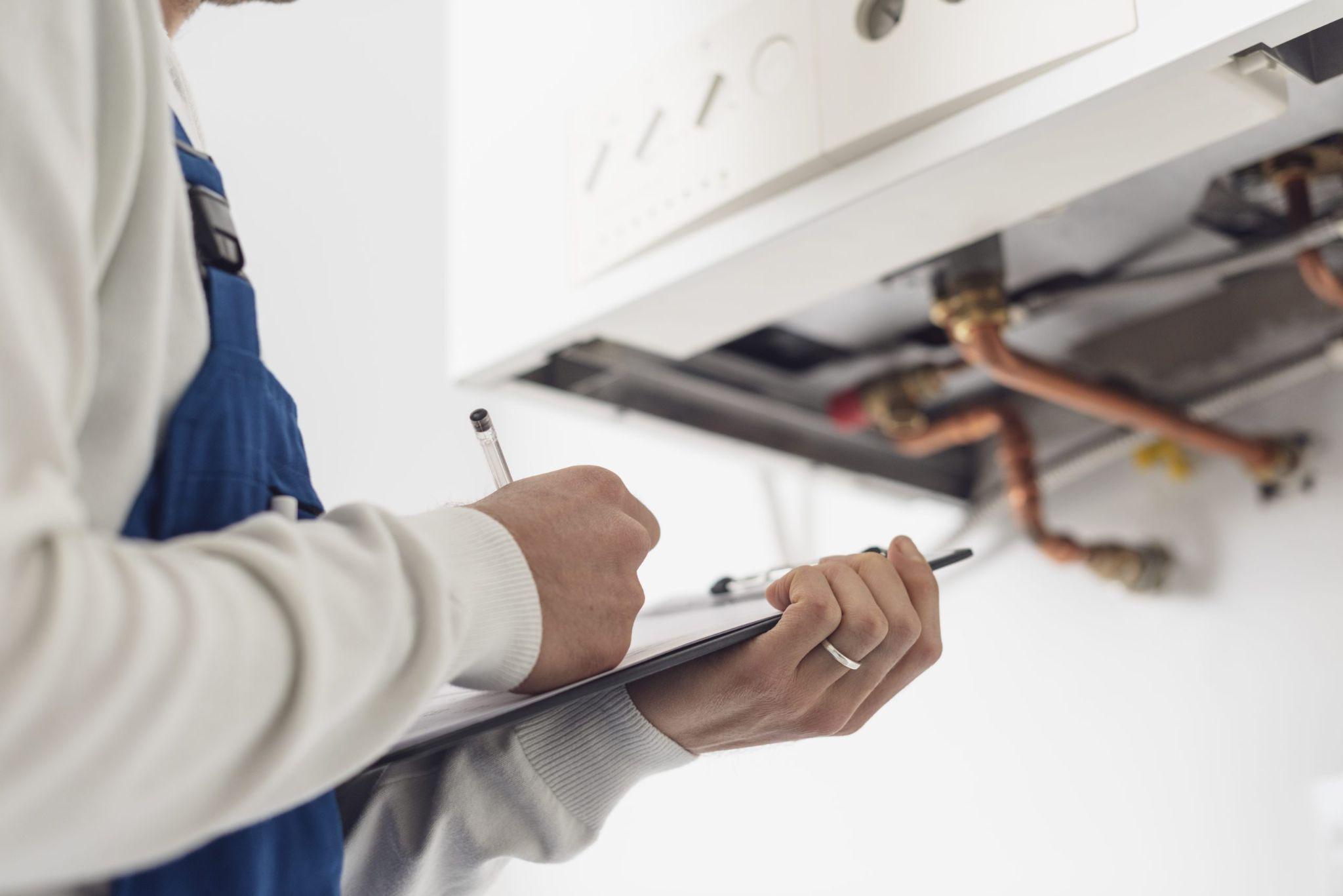Learning
The Impact of Sterile Injectables on Patient Care

Sterile injectables have become a cornerstone in the realm of modern healthcare, offering transformative solutions across various medical fields. Their inception marks a significant milestone in the evolution of medical treatments, reflecting a journey from rudimentary solutions to sophisticated, life-saving formulations.
Sterile injectables encompass a broad spectrum of medications, from vaccines and antivirals to pain relievers and chemotherapy drugs, each serving a unique purpose in patient care. Understanding their development, application, and impact is crucial for appreciating their role in advancing healthcare.
The history of sterile injectables is a narrative of continuous innovation and improvement. From the early days of simple syringes and glass vials to today’s advanced biologics and complex delivery systems, the evolution of injectables has been driven by a relentless pursuit of safety, efficacy, and patient comfort.
This progression not only reflects technological advancements but also a deeper understanding of patient needs and medical challenges.
Different types of sterile injectables have revolutionized treatment approaches in numerous medical specialties. Injectable medications offer several advantages, including immediate drug delivery to the bloodstream, bypassing the digestive system for quicker efficacy, and the ability to deliver drugs that cannot be taken orally.
This versatility makes them indispensable tools in both acute and chronic care settings, addressing a wide range of health conditions.
The significance of sterile injectables, however, extends beyond their medical applications. They symbolize a broader commitment to patient safety, quality healthcare, and the relentless pursuit of medical excellence.
This article aims to delve into the multifaceted impact of sterile injectables, exploring their influence on patient care, healthcare practices, and the pharmaceutical industry at large.
Technological Evolution in Manufacturing
The manufacturing of sterile injectables has undergone a profound transformation, primarily driven by technological advancements. These developments have not only enhanced the efficiency of production but have also significantly improved the quality and safety of the end products.
The integration of cutting-edge technologies in manufacturing processes has been pivotal in ensuring that injectables meet the highest standards of sterility and efficacy.
Automation and precision engineering have emerged as game-changers in the production of sterile injectables. Automated systems facilitate the mass production of vials and syringes while maintaining consistent quality and sterility.
Precision engineering, on the other hand, ensures that each dose of medication is accurately measured and contained, minimizing the risks of contamination and dosage errors. These technological advancements have been instrumental in scaling up production to meet the growing demands of the healthcare sector.
The impact of these technological improvements extends beyond the manufacturing floor. Enhanced safety and efficacy of sterile injectables directly translate to better patient outcomes.
For instance, the precision in dosage ensures that patients receive the exact amount of medication required for their treatment, reducing the risks of adverse reactions and improving the overall effectiveness of the therapy.
Looking to the future, the field of sterile injectable manufacturing is poised for further innovation. Emerging technologies like 3D printing and nanotechnology hold the promise of even more personalized and efficient drug delivery systems.
As the industry continues to embrace these technological advancements, the production of sterile injectables is expected to become more streamlined, cost-effective, and tailored to individual patient needs.
Sterile Injectables in Clinical Practice
In the realm of clinical practice, sterile injectables play a pivotal role in a myriad of treatment protocols. Their versatility and efficacy make them indispensable in emergency care, surgery, chronic disease management, and numerous other medical scenarios.
The immediate delivery of medication into the bloodstream allows for rapid response in critical situations, making injectables a mainstay in emergency rooms and intensive care units.
One of the most significant impacts of sterile injectables is observed in the treatment of chronic conditions such as diabetes, rheumatoid arthritis, and multiple sclerosis. These conditions often require regular, precise dosing of medication, a task that injectables perform with remarkable efficiency.
The use of sterile injectables in such cases not only ensures consistent drug delivery but also enhances patient compliance and convenience.
Healthcare professionals play a crucial role in the administration of sterile injectables. Their expertise in handling, storing, and administering these medications is vital for maximizing their therapeutic benefits.
Training and education in injectable drug administration are therefore essential components of healthcare practice, ensuring that medical staff are equipped with the knowledge and skills to utilize these medications effectively.
Patients’ experiences with sterile injectables are largely positive, particularly in terms of the convenience and efficacy of treatment. Injectable medications often offer relief when oral medications are ineffective or unsuitable, providing patients with an alternative that can significantly improve their quality of life.
Despite some initial apprehension, especially regarding injections, many patients report high satisfaction with injectable treatments, citing improved health outcomes and ease of use as key factors.
Regulatory Standards and Quality Control
In the production of sterile injectables, adherence to rigorous quality and safety standards is non-negotiable. The regulatory landscape governing these medications is complex and stringent, with agencies like the FDA setting comprehensive guidelines to ensure the highest levels of product safety and efficacy.
These regulations cover a wide array of aspects, from the ingredients used in formulations to the sterility of manufacturing processes and the integrity of packaging.
Pharmaceutical companies must navigate this intricate regulatory environment to bring their products to market, a task that demands meticulous attention to detail and unwavering commitment to quality.
The challenges of maintaining consistent quality in the mass production of sterile injectables are substantial. Variability in raw materials, fluctuations in manufacturing conditions, and the inherent complexities of biological products all pose potential risks to product consistency.
To address these challenges, pharmaceutical manufacturers employ robust quality control systems. These systems include regular testing at various stages of production, rigorous process validation, and thorough documentation to track and address any quality concerns.
Regulatory compliance is a dynamic process, evolving with advancements in medical science and manufacturing technologies. Pharmaceutical companies must stay abreast of changes in regulatory requirements and adapt their practices accordingly.
This continuous adaptation not only ensures compliance but also fosters innovation, as companies seek new ways to meet regulatory standards more efficiently and effectively.
The ongoing process of quality assurance in pharmaceutical manufacturing is not just a regulatory requirement; it is a moral imperative. The end goal of these stringent standards and regulations is to safeguard patient health.
Every sterile injectable that meets these rigorous standards is a testament to the pharmaceutical industry’s dedication to patient safety and its role in delivering high-quality healthcare.
Economic Impact and Accessibility
The economic implications of sterile injectables are far-reaching, affecting healthcare systems, providers, and patients alike. For healthcare systems, the cost of sterile injectables is a significant factor in budgeting and resource allocation.
These costs can vary widely, influenced by factors such as the complexity of the drug formulation, manufacturing costs, and market demand. Healthcare providers, in turn, must balance the need for these often life-saving medications with the financial constraints of their operating budgets.
Affordability and accessibility are critical issues when it comes to sterile injectables. Patients require these medications for a range of conditions, from chronic diseases to acute medical emergencies. However, the cost of some injectables can be prohibitive, limiting access for those who need them most.
This dilemma highlights the need for a balanced approach that ensures the availability of high-quality sterile injectables while keeping them affordable for patients.
Leading companies in the pharmaceutical industry play a pivotal role in addressing these challenges. Medivant Healthcare, for example, has focused on manufacturing high-quality sterile injectables efficiently and affordably.
By leveraging advanced manufacturing technologies and maintaining high standards, their efforts exemplify the industry’s broader commitment to making sterile injectables more accessible while upholding the quality and safety standards that patients rely on.
Strategies to improve patient access to sterile injectables involve various stakeholders, including pharmaceutical companies, healthcare providers, insurance companies, and policy makers.
Collaborative efforts are required to develop solutions that address cost barriers while ensuring the continuous supply of high-quality medications. These initiatives might include price regulation policies, subsidies for critical medications, and partnerships between pharmaceutical companies and healthcare institutions to enhance distribution efficiency.
Looking Ahead: The Future of Sterile Injectables
As the healthcare landscape continues to evolve, so too does the field of sterile injectables. Future advancements in this area are likely to focus on personalized medicine, with injectables tailored to individual patient needs and genetic profiles.
This personalization could lead to more effective treatments with fewer side effects, revolutionizing patient care in numerous therapeutic areas.
Innovation in drug delivery systems is another area of potential growth. Advances in nanotechnology and biotechnology could lead to new types of injectable therapies that offer improved efficacy, targeted delivery, and enhanced patient comfort.
These innovations would not only improve patient outcomes but also potentially reduce the frequency and dosage of treatments, further enhancing patient convenience.
The role of sterile injectables in global health is also expected to expand. As healthcare systems around the world grapple with challenges such as aging populations, chronic diseases, and emerging health threats, the demand for effective and efficient treatment options will continue to rise.
Sterile injectables will be at the forefront of meeting these challenges, offering solutions that can be rapidly deployed and scaled to meet diverse healthcare needs.
The future of sterile injectables is one of exciting possibilities and challenges. As pharmaceutical companies, healthcare providers, and researchers collaborate to advance this field, the ultimate beneficiaries will be patients worldwide.
Continued innovation, commitment to quality, and a focus on accessibility will ensure that sterile injectables remain a vital component of patient care for years to come.
SEE ALSO: EU Regulators Delay Approval For Novavax’s Variant-Tailored Covid-19 Vaccine

Learning
First-Time Buyer’s Guide to the UK Property Market

Entering the UK property market as a first-time buyer can feel both exciting and daunting. The process is filled with potential pitfalls and complex decisions, but with the right guidance, it can be navigated smoothly. The estate agents in Yorkshire demystify the journey from the initial decision to buy a home to the moment you step over the threshold of your new property.
Understanding Your Financial Position
The first and perhaps most crucial step in the home-buying process is understanding your financial situation. This includes assessing your savings, income, and current debts. Here’s how you can prepare:
1. Deposit: Generally, you’ll need at least 5% of the property price as a deposit, though aiming for 10% or more can provide better mortgage rates.
2. Income and Expenses: Use a budget planner to assess your monthly income against your expenses. This will help you understand how much you can afford in monthly mortgage repayments.
3. Credit Score: Lenders will evaluate your credit score to determine your mortgage eligibility. So it’s important to have a good credit score, and you should work on it if required.
4. Mortgage Options: Speak to a mortgage advisor to understand different types of mortgages, such as fixed-rate, variable-rate, and help-to-buy schemes.
Getting a Mortgage Agreement in Principle
A Mortgage Agreement in Principle (AIP) is a statement from a lender indicating how much they’ll likely lend you. You will be a more attractive buyer with an AIP as it shows sellers you’re serious and financially prepared.
Deciding What You Want
Before you start viewing properties, it’s essential to know what you’re looking for. Consider the following factors:
1. Location: Proximity to work, schools, public transport, and amenities are key. Research neighbourhoods to find the best fit for your lifestyle.
2. Property Type: Decide whether you want a flat, terraced house, semi-detached, or detached property. Each has its pros and cons.
3. Must-Haves: Make a list of non-negotiables, such as the number of bedrooms, garden size, and parking facilities.
4. Future Proofing: Consider your future needs. Are you planning to start a family? Do you need space for a home office?
Starting the Property Search
With a clear idea of what you’re looking for, you can begin your property search. Here are some tips:
1. Use Online Portals: Websites like Rightmove, Zoopla, and OnTheMarket are excellent starting points. Set up alerts to get notified of new listings that meet your criteria.
2. Visit Estate Agents: Register with local estate agents who can provide insights into the market and inform you of new properties before they’re listed online.
3. Attend Viewings: Don’t rush this part. Visit several properties to get a feel for what’s available in your price range.
Making an Offer
Once you find a property you love, it’s time to make an offer. Here’s how to approach it:
1. Research: Check the selling prices of similar properties in the area to gauge a fair offer.
2. Negotiate: Don’t be afraid to negotiate. The starting point is most usually the asking price.
3. Conditions: You might include conditions in your offer, such as the inclusion of certain fixtures or a specific moving date.
The Legal Process
If your offer is accepted, the legal process begins. You’ll need a solicitor or licensed conveyancer to handle the legalities. Here’s what to expect:
1. Conveyancing: This is the legal transfer of property ownership. Your solicitor will handle this, including conducting searches, dealing with the Land Registry, and transferring the funds.
2. Surveys and Inspections: Arrange for a property survey to check for structural issues. There are different types of surveys, from basic condition reports to full structural surveys.
3. Mortgage Finalisation: Once the survey is complete and satisfactory, your mortgage can be finalised.
4. Exchange of Contracts: This is when the sale becomes legally binding. You’ll pay your deposit at this stage.
5. Completion: On the agreed completion date, the remaining money is transferred, and you receive the keys to your new home.
Moving In
Moving day can be hectic, but planning can ease the stress:
1. Hire a Removal Company: Book a reliable removal company well in advance. Discover the best deals by getting quotes from multiple companies.
2. Pack Strategically: Label your boxes by room and keep essential items accessible.
3. Notify Utilities and Change Address: Inform your utility providers of your move date and update your address with banks, the DVLA, and other important institutions.
Settling In
Get settled. Introduce yourself to the neighbours, familiarise yourself with the local area, and really start to make the place your own.
Here are a few final tips:
1. Safety Checks: Make sure that your smoke alarms and carbon monoxide detectors are working, and make sure that you know where the gas and electricity meters are located.
2. Maintenance Plan: Keep a record of the smooth functioning of your new home with a maintenance schedule, complete with regular checks and seasonal tasks.
3. Personal Touches: Add personal touches to make the space feel like home. This can be from putting up family photos or redoing the decoration in your rooms.
Conclusion
Buying your very first home in the UK is most definitely a milestone, difficult and full of challenges but rewarding in the end. Such a philosophy guides you in understanding finances and knowing what you want to achieve from detailed research, and seeking professional advice that confidently helps you navigate the property market. Yes, the journey may have its hurdles, but in the end—owning your own home—the reward will be worth the effort. Welcome to your new chapter!
SEE ALSO: Conquer the Chaos: Hacks to Clean Your Home in Half the Time
Learning
5 Health Benefits of Regular Pedicures

There’s nothing quite like a pedicure to keep your feet looking and feeling their best, but did you know that pedicures do more than simply enhance the appearance of your feet? Many people don’t realize that regular pedicures can come with a wide range of health benefits that can promote the well-being of your feet, so here are some ways that your routine pedicure keeps both your toenails and feet in the best condition possible!
Smoother Skin
One of the biggest misconceptions about pedicures is that they only cater to and look after your toenails. While you’ll definitely be leaving each session with a fresh coat of nail polish, your pedicure can also do wonders for the health of your skin. Aside from trimming and shaping your nails and cuticles, you’ll notice that your nail technician also dedicates a few steps to the skin of your feet.
After inspecting your feet and looking for any issues or imperfections that may need to be addressed, your technician will work on an exfoliating scrub to remove any dead skin cells. This step may also be aided by a foot file, which can be used to buff away any calluses and other problem areas manually.
Softer Skin
After your nail technician addresses all the problem areas of your feet and removes any unwanted dead skin cells, he or she will often massage in a moisturizing product, such as lotion, cream, or butter, to ensure that your skin is properly moisturized. These products contain skin-loving ingredients that will ensure that your feet have everything they need to look and feel their best so that you can walk out of your pedicure with a renewed sense of confidence.
Healthier Nails
After your pedicure session, your nails will not only look better due to the fresh coat of nail polish, but they’ll also be healthier and stronger. This is because your nail technician takes their time to ensure that your nails are properly looked after through steps that include deep cleaning, nail trimming, nail filing, and cuticle care. All of these things work together to prevent issues like ingrown nails from occurring, all the while improving the appearance of your nails.
Increased Blood Circulation
While the specific steps included in your pedicure will depend on the beauty salon, most pedicures will have a massage step somewhere in the mix. One of the often overlooked benefits of these massages is the increased blood circulation, which can deliver more nutrients and oxygen to your feet and nails, promoting their health and appearance. Aside from that, better blood flow means reduced tension and soreness, as well as better distributed heat throughout your body.
Reduced Infections
A significant amount of dirt and bacteria can build up on your feet without you even realizing it, but pedicures can be a great way to prevent these from happening in the first place. The exfoliation step of a pedicure removes dead skin cells as well as all the debris that may have accumulated underneath, and the deep cleaning of your toenails and cuticles also gets rid of any impurities that may have slipped beneath them, which can stop infections from happening.
These are some of the many health benefits that you can look forward to at your next pedicure appointment. However, it’s worth noting that you need to book regular sessions to truly reap all the rewards. This can be difficult, especially when you don’t feel like driving to your nearest nail salon after a long day, but the good news is that you can enjoy the salon experience in the comfort of your own home with a home pedicure service.
Learning
Commercial Boiler Installation Services London

For businesses in the bustling city of London, having a reliable heating system is crucial. Whether you’re opening a new office, expanding your current premises, or simply upgrading an outdated system, commercial boiler installation services for businesses in London are essential to ensure your operations run smoothly and efficiently. Proper installation and maintenance of commercial boilers can make a significant difference in energy efficiency, cost savings, and the overall comfort of your workspace.
The Importance of Professional Installation
When it comes to installing a commercial boiler, professional expertise is paramount. Here’s why:
- Efficiency and Performance: Professional installation ensures that your boiler operates at peak efficiency, reducing energy consumption and lowering utility bills. A well-installed boiler can effectively meet the heating demands of your business without unnecessary energy waste.
- Safety: Commercial boilers are complex systems that require precise installation to operate safely. Professional installers adhere to stringent safety standards and regulations, minimizing the risk of accidents and ensuring the safety of your employees and premises.
- Compliance with Regulations: Commercial properties are subject to various building codes and regulations. Professional installers are well-versed in these requirements and ensure that your boiler system complies with all local laws and standards.
- Longevity and Reliability: Proper installation is critical to the longevity and reliability of your boiler. A professional installation can prevent common issues such as leaks, pressure problems, and system failures, ensuring that your boiler runs smoothly for years to come.
Key Considerations for Commercial Boiler Installation
When planning for a commercial boiler installation, several factors need to be considered:
- Type of Boiler: The type of boiler you choose will depend on your business’s specific needs. Options include gas boilers, oil boilers, and electric boilers, each with its own set of advantages. Consulting with a professional can help you determine the best choice for your business.
- Sizing and Capacity: The boiler’s size and capacity must match the heating demands of your commercial space. An undersized boiler will struggle to meet your needs, while an oversized one will lead to inefficiencies and higher costs.
- Location: The placement of your boiler affects its efficiency and accessibility for maintenance. Professional installers can help you choose the optimal location for your boiler.
- Integration with Existing Systems: If you’re upgrading or replacing an existing boiler, it’s essential to ensure compatibility with your current heating system. Professional installers can seamlessly integrate the new boiler with your existing setup.
Choosing the Right Installation Service

Selecting the right installation service provider is crucial to the success of your boiler installation project. Consider the following when making your choice:
- Experience and Expertise: Look for a provider with a proven track record in commercial boiler installations. Experienced installers can handle the complexities of commercial systems and provide high-quality workmanship.
- Reputation: Check reviews and testimonials from previous clients to gauge the provider’s reliability and customer satisfaction.
- Comprehensive Services: Choose a provider that offers a full range of services, including installation, maintenance, and repair. This ensures that all your boiler needs are met by a single, trusted source.
In London, ROWLEN is a reputable name known for delivering top-notch commercial boiler installation services. Their team of experts is dedicated to providing efficient, safe, and compliant installations tailored to the unique needs of businesses.
Conclusion
Investing in professional commercial boiler installation services for businesses in London is essential for ensuring efficiency, safety, and long-term reliability. By choosing an experienced and reputable service provider like ROWLEN, you can rest assured that your heating system will be installed correctly and maintained to the highest standards. Proper installation not only enhances the performance of your boiler but also contributes to the overall comfort and productivity of your business environment.
SEE ALSO:
-

 News4 years ago
News4 years agoLet’s Know About Ultra High Net Worth Individual
-
Entertainment2 years ago
Mabelle Prior: The Voice of Hope, Resilience, and Diversity Inspiring Generations
-
News11 years ago
Enviromental Groups Tell Mekong Leaders Lao Dam Evaluation Process Flawed
-

 Health4 years ago
Health4 years agoHow Much Ivermectin Should You Take?
-

 Tech2 years ago
Tech2 years agoTop Forex Brokers of 2023: Reviews and Analysis for Successful Trading
-

 Lifestyles3 years ago
Lifestyles3 years agoAries Soulmate Signs
-

 Entertainment3 years ago
Entertainment3 years agoWhat Should I Do If Disney Plus Keeps Logging Me Out of TV?
-

 Health3 years ago
Health3 years agoCan I Buy Ivermectin Without A Prescription in the USA?